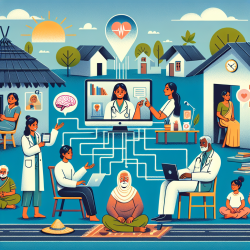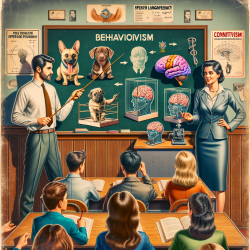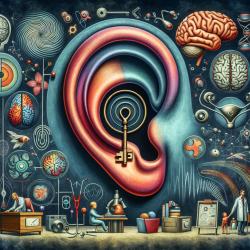In the dynamic world of special education, where the essence of personal connection and the effectiveness of therapy intertwine, the advent of virtual therapy has emerged as a beacon of innovation and hope. As a Special Education Director, I have witnessed firsthand the transformative power of integrating online therapy services into our educational framework. This integration has not only expanded our capabilities but has also infused our daily operations with a profound sense of joy and possibility. Today, I am thrilled to share insights into how virtual therapy is reshaping the landscape of special education, offering educational psychologists and professionals a new horizon of opportunities to inspire and support our students.
The journey of special education is one marked by continuous evolution and adaptation. In our quest to provide the most effective support to students with diverse needs, the introduction of virtual therapy by companies like TinyEYE has been a game-changer. The flexibility, accessibility, and innovative approach of online therapy services have revolutionized the way we think about and deliver therapeutic interventions. It's a transformation that brings with it an active feeling of joy, not just for the students who receive tailored support but for the educational psychologists and therapists who deliver this care.
One of the most remarkable aspects of virtual therapy is its ability to transcend geographical and physical limitations. Students in remote or underserved areas, who previously might have struggled to access specialized therapy services, can now receive high-quality interventions from the comfort of their own homes or schools. This level of accessibility ensures that no child is left behind, fostering an inclusive educational environment where every student has the opportunity to thrive. The joy that comes from witnessing the progress and breakthroughs of these students is immeasurable and serves as a constant reminder of why we chose this path in special education.
For educational psychologists, the shift towards virtual therapy represents a significant advancement in our toolkit. The digital platform provided by TinyEYE and similar services offers a plethora of tools and resources that enhance the therapeutic process. Interactive games, engaging activities, and real-time progress tracking are just a few examples of how virtual therapy can be customized to meet the individual needs of each student. This level of personalization not only maximizes the impact of therapy but also ignites a spark of excitement and motivation in students, making the learning process both effective and enjoyable.
Moreover, the integration of virtual therapy into special education programs has fostered a collaborative environment among professionals. Educational psychologists, therapists, teachers, and parents can now easily communicate and work together towards common goals, thanks to the streamlined communication channels provided by online platforms. This collaborative approach enhances the consistency and continuity of care, ensuring that every intervention is aligned with the student's educational plan and personal growth objectives.
However, embracing virtual therapy is not without its challenges. Ensuring the quality of therapy, maintaining student engagement, and addressing the digital divide are critical considerations that require our attention and creativity. It is here that the role of educational psychologists becomes pivotal. By leveraging our expertise in human behavior, learning strategies, and technological tools, we can guide the implementation of virtual therapy in ways that maximize its benefits while mitigating potential drawbacks. Our leadership and innovation in this area not only contribute to the success of virtual therapy initiatives but also inspire confidence and enthusiasm among all stakeholders involved.
As we look to the future, the potential of virtual therapy in special education is boundless. With ongoing advancements in technology and a growing body of research supporting its effectiveness, virtual therapy is poised to become an integral part of special education services. It offers a pathway to more personalized, accessible, and engaging therapeutic interventions, promising a brighter future for students with special needs. The joy and satisfaction that come from seeing our students overcome challenges and reach their full potential are unparalleled, and virtual therapy is a powerful tool in making this vision a reality.
In conclusion, the integration of virtual therapy into special education is a journey filled with hope, challenges, and immense rewards. It represents a significant leap forward in our ability to meet the diverse needs of students and provides a new platform for educational psychologists to innovate and inspire. As we embrace this future, let us do so with the joy and determination that characterize our mission in special education. Together, we can unlock new possibilities for our students, empowering them to achieve their dreams and lead fulfilling lives. The journey ahead is bright, and with virtual therapy, we are well-equipped to navigate it with success and joy.










